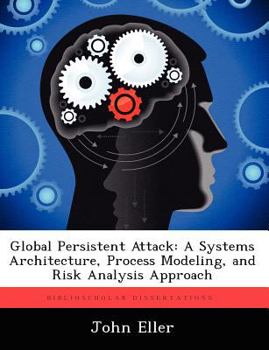Global Persistent Attack: A Systems Architecture, Process Modeling, and Risk Analysis Approach
This research developed a defendable and traceable Global Persistent Attack (GPA) and Battlespace Awareness (BA) concepts of operation. The detailed architecture illustrates the commonality of capabilities and associated activities along with their critical relationships within Global Persistent Attach (GPA). In order to accomplish risk identification and anaysis, a Process Sequence Model (PSM) was developed to display the logical sequencing necessary for conducting GPA operations. Each activity and decision point was given a nodal probability of success and evaluated using Monte Carlo simulation to determine the overall mission probability of success. Sensitivity analysis was also accomplished to identify the capabilities most critical to the success of GPA operations. The identification of critical capabilities is essential to the proper development of the fiscally constrained force structure with respect to minimizing risk. Systems Engineering (SE) methodology and tools provide a structured, traceable process for identifying the critical relationships required to sustain the GPA concept. This insight will provide Air Combat Command (ACC) an improved decision making process to ensure the objectives of the national defense strategy can be attained while minimizing risk associated with the fiscally constrained force structure.
This work has been selected by scholars as being culturally important, and is part of the knowledge base of civilization as we know it. This work was reproduced from the original artifact, and remains as true to the original work as possible. Therefore, you will see the original copyright references, library stamps (as most of these works have been housed in our most important libraries around the world), and other notations in the work.
This work is in the public domain in the United States of America, and possibly other nations. Within the United States, you may freely copy and distribute this work, as no entity (individual or corporate) has a copyright on the body of the work.
As a reproduction of a historical artifact, this work may contain missing or blurred pages, poor pictures, errant marks, etc. Scholars believe, and we concur, that this work is important enough to be preserved, reproduced, and made generally available to the public. We appreciate your support of the preservation process, and thank you for being an important part of keeping this knowledge alive and relevant.





